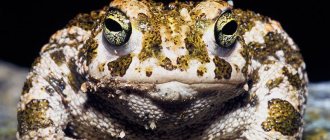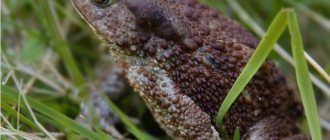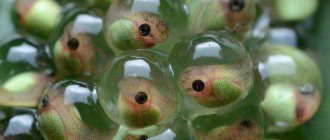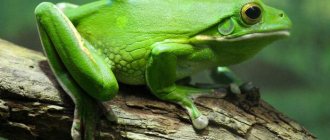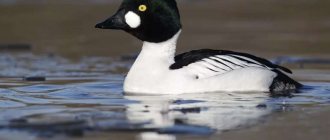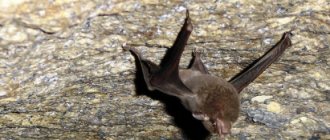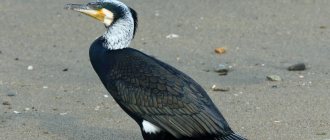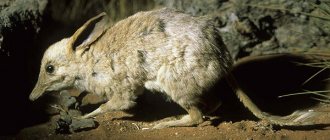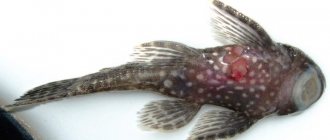green toad, or green european toad (Bufo viridis) lives in northeastern Africa, Europe, Siberia and Central Asia. Inhabits a wide range of biotopes: forests, forest-steppes, steppes, semi-deserts and deserts. It can often be found in fields, gardens and orchards. Leads a terrestrial lifestyle. Occupies the driest habitats. Reproduction occurs in water. The total length of the cord can reach up to 7 m, and the number of eggs in one clutch reaches 12,800 pieces.
Appearance
The green toad can survive a long period without water (it can lose an amount of water equal to half its body weight without harm to health). Her skin is tuberous, on the sides of her head there are two large poisonous glands (parotids), which serve as a means of protection against enemies. The hind limbs are slightly longer than the forelimbs. The pupil of the eye is horizontal. It is capable of vigorously evaporating moisture, which helps avoid overheating, but for this the toad must have constant access to water. Easily tolerates heat. Feels best at a temperature of +33°C. Toads living in hot and dry areas hibernate not only in winter, but also in summer (during the hottest months). They lie down in burrows to wait out unfavorable times. Due to short hind legs, it jumps poorly.
Related article Keeping the green toad (Bufo viridis)
The Story of Life at the Zoo
Green toads are kept in the Amphibian Laboratory of the Scientific Research Department in a horizontal terrarium at a temperature of 24-26 degrees C in the summer and 8-15 degrees C in the winter. Soil – rounded gravel or crushed pine bark (mulch). The terrariums are equipped with cork oak shelters and spacious bathing areas. Spraying daily.
The main diet of green toads at the Moscow Zoo consists of banana and house crickets, cockroaches; once a week, adult animals are offered newborn mice.
Green toad behavior
Leads a terrestrial lifestyle. Occupies the driest habitats, inaccessible to other amphibians. Active at night and at dusk, in the mountains during the day. Males prefer dark objects; almost no attention is paid to their shape.
The green toad begins to prepare for wintering when the average daily air temperature drops to 7-8°C. It overwinters in the same place where it hides during the day: in rodent burrows, holes, under stones, in cracks in walls, buries itself in loose soil (to a depth of 10-12 cm), and sometimes overwinters in ditches or wells. Hibernates alone, sometimes 3-4 individuals together. The average wintering duration is 185 days. They emerge from hibernation when the air temperature rises to 15-16°C.
Toad habitats
The green toad is distributed over a very wide area. In Europe, the northern border of its range runs from France, Belgium, Holland and Denmark through Southern Sweden, then through the territory of Estonia, reaching the latitude of St. Petersburg, the Rybinsk Reservoir and Kazan. Known in the Kirov region, the Udmurt Republic, and Bashkortostan.
In the Asian part of the former USSR, over a considerable distance, the northern border of the distribution of the green toad reaches the border of Kazakhstan, goes through Altai further east to Western Mongolia, Tibet and the Himalayan Mountains. In the west, the toad's distribution is limited to Eastern France. The southern border of the range runs through North Africa, Syria, Iran, Iraq and Afghanistan.
In general, green toads are very flexible and have adapted to live in a wide variety of habitats. They are resistant to drought, are able to use temporary reservoirs for spawning, and are less susceptible to the negative influence of the external environment.
This species inhabits mixed and broad-leaved forests, forest-steppe, steppe, semi-desert and desert zones. It rises high into the mountains: in the Alps it was observed at an altitude of 1950 meters, in the Himalayas - up to 4670 meters. The green toad, like the gray toad, can live next to a person.
Green toad behavior
Leads a terrestrial lifestyle. Occupies the driest habitats, inaccessible to other amphibians. Active at night and at dusk, in the mountains during the day. Males prefer dark objects; almost no attention is paid to their shape.
The green toad begins to prepare for wintering when the average daily air temperature drops to 7-8°C. It overwinters in the same place where it hides during the day: in rodent burrows, holes, under stones, in cracks in walls, buries itself in loose soil (to a depth of 10-12 cm), and sometimes overwinters in ditches or wells. Hibernates alone, sometimes 3-4 individuals together. The average wintering duration is 185 days. They emerge from hibernation when the air temperature rises to 15-16°C.
Main Enemies
Among the enemies that pose a threat to the life of the green toad are storks, gray owls, and red kites. In order to somehow scare off the enemy, the animal emits a specific smell and makes frightening sounds. While birds may be “scared off” by this tactic, it has no effect on snakes at all.
Young animals are threatened by chickens, ducks and starlings. Tadpoles are also eaten by larvae of dragonflies and beetles of other families. Green toads can become prey for badgers, minks and otters.
The average lifespan of anurans is 10 years.
Reproduction
Occurs in February - July, depending on latitude and altitude, immediately after wintering. Reproduction occurs in swamps, ponds, lakes, backwaters of streams and rivers, reservoirs, ditches, puddles, etc. Mating occurs in shallow water. The male grabs the female from above, pressing her to his stomach. They can remain in this position for several hours. The clutch of a green toad is in the form of a cord, in which the eggs are arranged in two rows. Black caviar. The total length of the cord can reach up to 7 m, and the number of eggs in one clutch reaches 12,800 pieces. Eggs are deposited near the shore; after sweeping the eggs, the green toad leaves the pond. There are “mixed marriages” of crosses between gray and green toads.
Related article Green toad (Bufo viridis)
What a toad looks like: description of an amphibian
In body shape and size, green toads are identical to common toads: the body length of adult individuals is usually 5-8 cm.
The muzzle is short, blunt, the edges are strongly rounded, the lateral surfaces are slightly concave. Parotids are large. The swimming membrane on the forelimbs reaches the third (from the end) joints of the fingers, and on the hind limbs - to the third joint of the fourth finger. At the inner end of the tarsus there is a longitudinal leathery fold - by this feature the green toad can be distinguished from the gray (common) toad.
The skin of the dorsal surface of the body is tuberous. In most males the tubercles are sharp and end in spines; in females they are rounded and without spines. Sexual dimorphism is also manifested in the fact that males are smaller and slimmer than females.
The bottom of the body is covered with a dense network of wrinkles and small tubercles, the lower legs and metatarsus are smooth. The color above is gray-olive or greenish with dark green spots of irregular round shape, which have a narrow dark edge, and with numerous small red spots. On the legs, the spots are elongated into wide transverse stripes. Underneath, the body is off-white without spots or sometimes with a small number of dark grayish spots.
During the mating season, males develop black calluses on the first two or three fingers of the forelimbs, and there is an internal resonator under the skin of the throat.
Green toad development
The length of newborn tadpoles is 6-7 mm. After birth, the tadpoles attach to the gelatinous mass of cords, and then to underwater vegetation and other objects. After 3-4 days, their mouth breaks out and they begin to feed intensively. Tadpoles can live in temperatures ranging from 1-45°C. Under natural conditions, development lasts 45-55 days (at an average water temperature of 21.5°C). The sizes of metamorphosed fingerlings reach 14-16 mm. In shallow waters near the shores, tadpoles form large aggregations containing thousands of individuals. Frequent use of shallow reservoirs for spawning leads to high mortality of eggs and tadpoles from drying out. Green toad tadpoles are cautious and shy. They feed on detritus and algae. The tadpoles of the green toad are distinguished by the fastest development among all tailless amphibians living in Russia. On the 5th day, their external gills disappear, on the 20th the rudiments of the hind limbs appear, on the 30th the hind limbs are divided into joints, on the 38th the forelimbs appear, and on the 39th the resorption of the tail begins. Tadpoles do not grow very quickly. The average increase per day is 0.8 mm.
Where do green frogs live?
Lifestyle The lake frog lives in permanent, fairly deep (more than 20 cm) reservoirs. Most often these are oxbow rivers, ponds, ditches, lakes, but often it can be found along river banks.
Interesting materials:
How to drain oil from a deep fryer? How to drain whey from yogurt? How do stratocumulus clouds affect the weather? How happy is the elephant? How do elephants eat? How to listen to music for free on iPhone? How to grease buns with yolk? How to change the password for logging into the Sberbank Online application? How to change the Sberbank tariff plan? How to mix an oxidizing agent?
How is a toad different from a frog?
External similarity and general characteristics of cold-blooded creatures are the reasons why frogs and toads are confused. Differences between them are observed in body structure, habits, and habitat. The reproductive capacity of frogs is much higher.
Frogs, unlike toads, are jumping creatures and can swim well. The short legs of toads do not allow them to develop speed, so they are quiet pedestrians. The skin of frogs, without the tubercles characteristic of toads, is smooth.
It does not require moisture, unlike the dry and keratinized surface of the body of toads. Frogs can always be seen near a pond, toads are earthly inhabitants. Many people dislike frogs and toads. But studying their populations reveals many positive aspects for preserving a normal ecosystem.
Description and features
The appearance of toads varies significantly, since there are about three hundred species of amphibians. But there are common features characteristic of tailless amphibians - a large head, short limbs placed on the sides, a flattened shape of a heavy body.
The body length of the toad varies from miniature individuals at 20 mm to giants in its family at 270 mm. Weight respectively from 50 grams to one kilogram. Females are larger than males, regardless of species.
A male can be recognized by small bumps on the front legs, which are called nuptial calluses. The main function of the leathery projections is to capture the female during reproduction.
The tongue of amphibian inhabitants is narrow and long. Upper jaw without teeth. The hearing system is well developed. A feature of male amphibians is the presence of a rudimentary ovary. Thanks to this, in certain conditions the uniqueness of toads is manifested when a male can turn into a female.
Amphibians have inconspicuous colors that allow them to blend in with their environment. Brown, gray-black, dirty green skin tones with a pattern of spots of different geometries characterize the toad outfit. The exception is the inhabitants of tropical countries, whose bright colors seem to warn of the toxic nature of the amphibian inhabitants.
The amphibian has no ribs. Distinctive skin with raised warts of varying sizes, dry to the touch. The parotid seals present in most species are called parotids. With their help, toads secrete a special secretion that protects the skin from drying out.
The second feature lies in the protective mechanism - the secreted mucus in many species is toxic and contains an alkaloid poison. When under stress, the toad is ready to defend itself from enemies in this way.
The mucus has a burning taste and an emetic effect. Animals that bite an amphibian are poisoned. Toad secretions are safe for humans, but contact of the secretion with mucous membranes can cause inflammation.
Perhaps this feature became the basis of the myth about the appearance of warts after touching a toad. Research by scientists has shown that there is no connection between amphibians and warts. All toads except the aha species, a tropical variety, are safe.
As a defense, amphibians inflate their body in front of the enemy, rise on their legs, increasing in size. The threatening posture makes it difficult to capture. Sometimes she even desperately jumps towards the enemy.
Toads are ubiquitous across all continents. There are no amphibian inhabitants only in the Arctic, Antarctic, and Greenland. In Australia, where there were no amphibians before, a population of the most poisonous aga toad was artificially created.
The natural enemies of amphibians are birds of prey, reptiles, and individual forest inhabitants. Toads cannot resist many enemies - storks, herons, ibises, hedgehogs, snakes. Their high fertility saves them from extinction.
The food addiction to insects of all types allows the use of toads to “protect” agricultural crops from annoying pests. In some countries, they specifically breed amphibians for these purposes. A wild toad, relocated to a summer cottage, with constant food available, takes root in one place and serves as a local “guard” of the crop.
